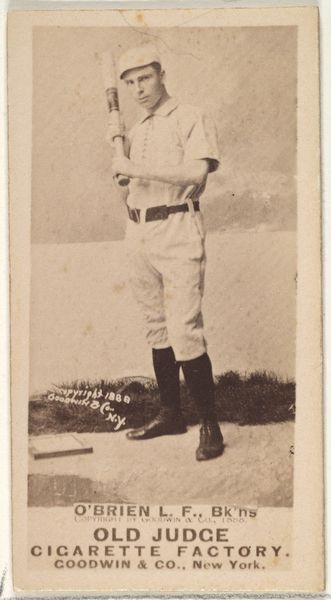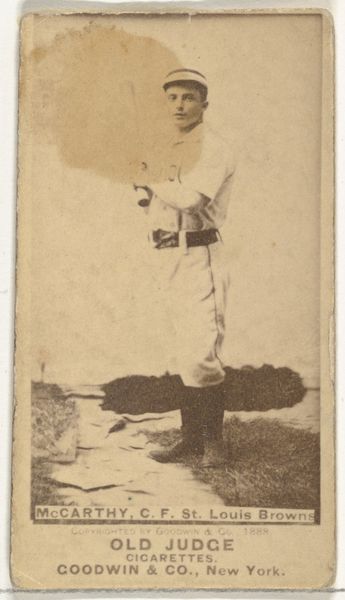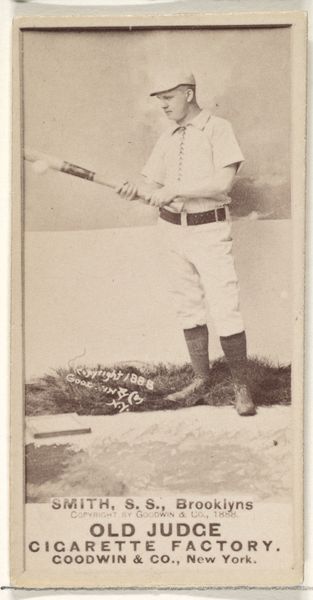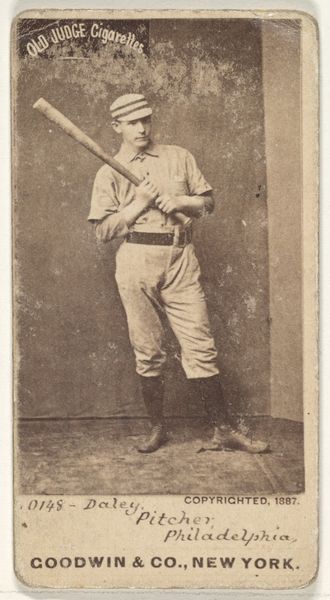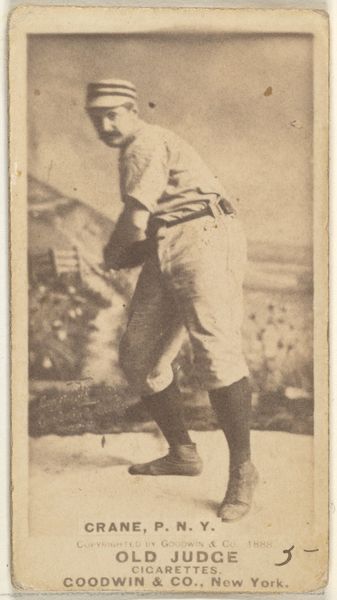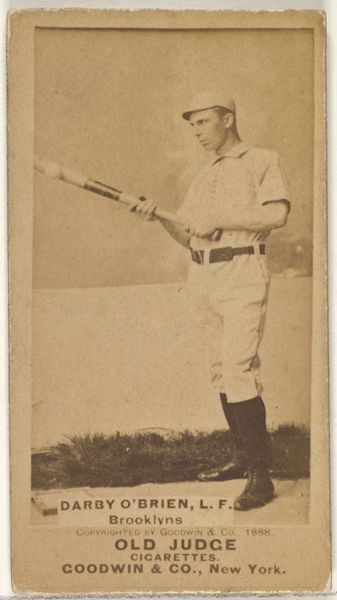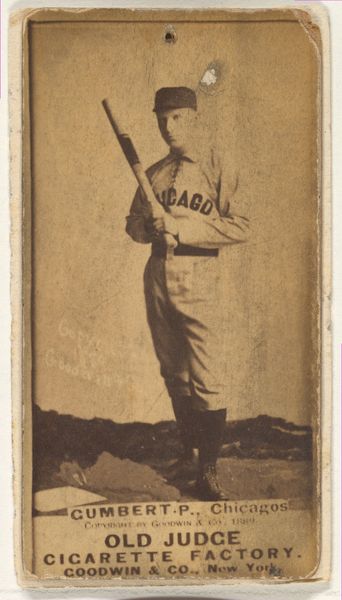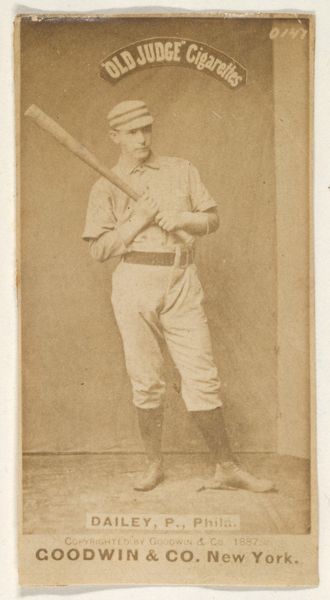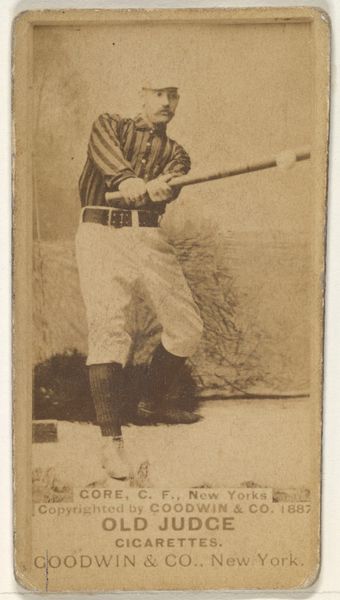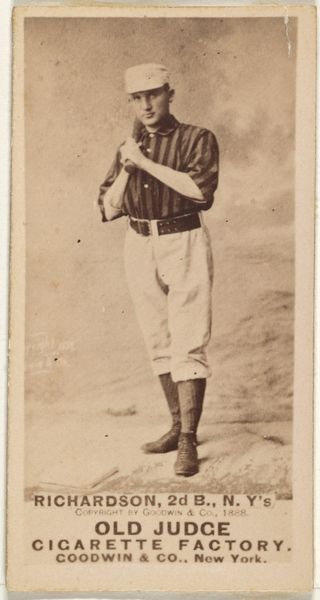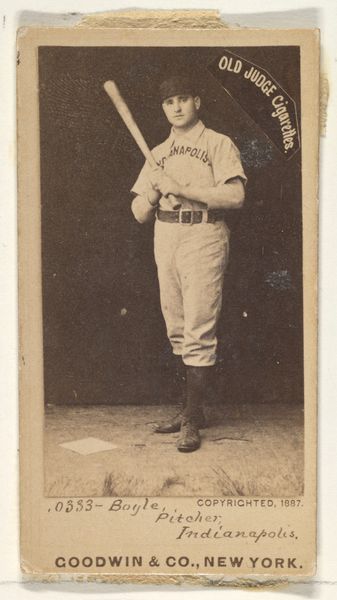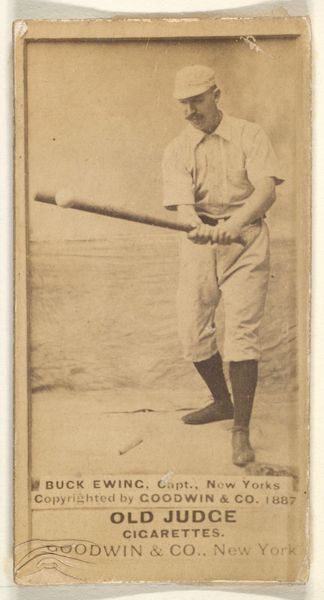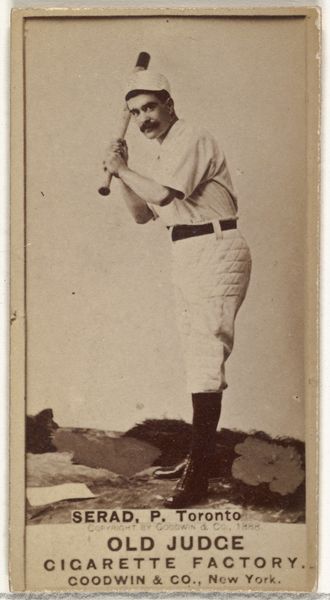
Darby O'Brien, Left Field, Brooklyn Bridegrooms, from the Old Judge series (N172) for Old Judge Cigarettes 1888
0:00
0:00
print, photography, photomontage
#
portrait
# print
#
impressionism
#
baseball
#
photography
#
historical photography
#
photomontage
#
men
#
genre-painting
Dimensions: sheet: 2 11/16 x 1 3/8 in. (6.9 x 3.5 cm)
Copyright: Public Domain
Curator: Check this out: "Darby O'Brien, Left Field, Brooklyn Bridegrooms" from the Old Judge series. It's a baseball card, a photographic print actually, from 1888 by Goodwin & Company. It's a piece of Americana preserved in sepia tones. Editor: Woah, that takes me back! Look at that baseball bat, so simple, almost rustic. He looks proud, in that no-nonsense way people did back then. You can almost smell the leather and the dusty field! Curator: Goodwin & Co. understood how deeply interwoven the rise of baseball was with mass culture, strategically utilizing figures like O’Brien for the "Old Judge Cigarettes" series. This positioned athletes as aspirational figures and smoking as something commonplace—constructing a particularly American ideal of masculinity tied to leisure, labor, and consumption. Editor: Hmm, darker thoughts now. It's strange associating such a pure thing like baseball with something as…well, carcinogenic as cigarettes. It’s weird how norms change. But the card itself, composition-wise, it’s got this nice staged feel, even a bit cinematic in its own way. Curator: The use of photomontage should be considered here, especially because it anticipates later movements in art and photography. Placed within art historical scholarship, this links the card, and the values it projects, to narratives around modernity, sport as performance, labor standards and, frankly, ethical quandaries around product marketing. Editor: "Ethical quandaries"—right. Still, look past the cigarette plug, and you have this glimpse into a different era. Makes me wonder about Darby himself, you know? What were his dreams, his anxieties, his walk-up song if he had one? Curator: Darby O’Brien exists, on this material remnant, outside of our present. These considerations allow us to confront these past legacies with sensitivity, critically considering them not merely as relics of nostalgia but artifacts ripe for scrutiny within evolving social and political landscapes. Editor: Right, critical viewing always. For me it boils down to seeing the guy holding the bat, that grainy texture – proof people existed and cared then, same as now, you know? Curator: Indeed. Context helps me understand how constructed images impact both our past and current reality. Editor: For me, its a portal. Lets you connect with something real beyond all the words and ideas, something breathing in the past.
Comments
No comments
Be the first to comment and join the conversation on the ultimate creative platform.
